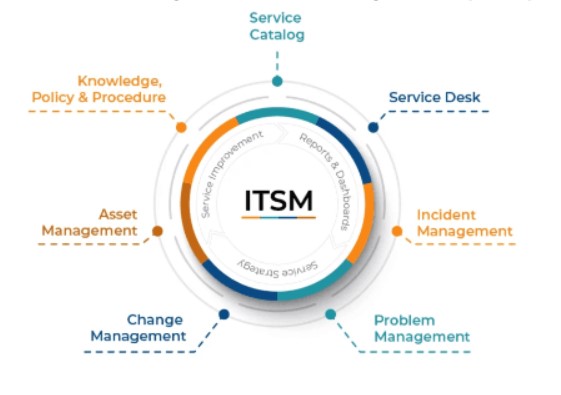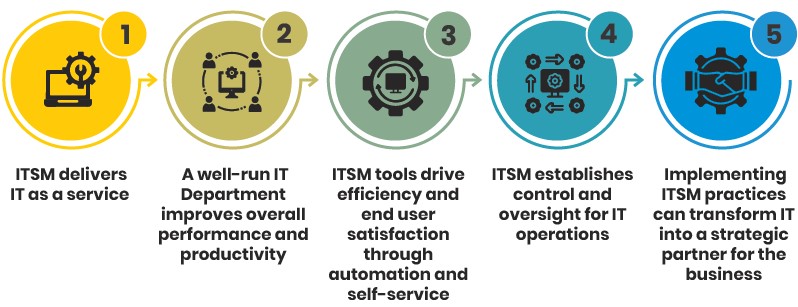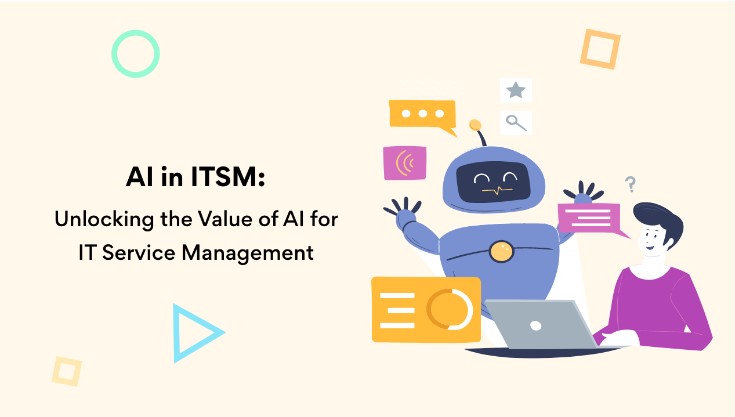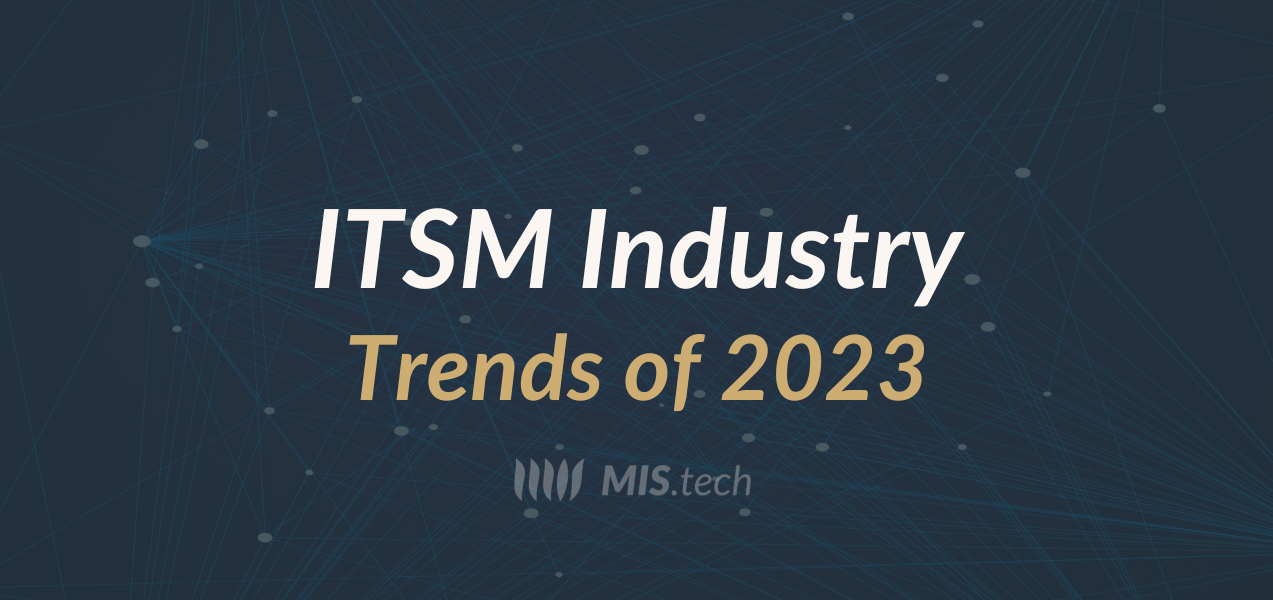Did you know? Like any other innovation system, IT Teams also need a team to manage the end-to-end delivery of its services to customers. That’s where the IT Service Management concept came from. The ITSM landscape is ever-evolving; this article will look at the latest ITSM industry trends to watch out for in 2023.
ITSM Industry Trends
Information Technology Service Management (ITSM) is a dynamic field that helps manage IT services and processes. Here is how it typically works: your office printer develops a fault, and you report it to your IT department. The team tags the issue as ‘printer default’ and logs every detail about the printer problem, including the date, time this issue was reported, and who reported it. The IT Team does troubleshooting and fixes the problem. After this is resolved, a message is passed to you and your team that the faulty printer has been repaired, and the ticket raised for the issue is marked as “resolved.”
Understanding IT Service Management (ITSM)

At its core, IT Service Management focuses on how IT teams manage the delivery of IT services to their customers. It involves aligning IT services with the needs of the business and delivering value to customers through structured processes and best practices.
ITSM is the connecting dot between IT teams and the rest of the organization to ensure that IT services are delivered seamlessly, problems are resolved efficiently, and changes are managed effectively.
Definition of IT Service Management
IT service management (ITSM) describes a strategic approach to design, deliver, manage, and improve how businesses use information technology. Here, we are checking the activities and processes that support a service operation throughout its lifecycle, from service and change management to problem, incident, asset, and experience management.
The Importance of IT Service Management

Let’s discuss the importance of ITSM:
- First, to improve efficiency. We all want to get the most out of the resources available. IT service management has various components that allow organizations to do this; one is IT asset management for optimizing the life cycle of IT assets.
- Secondly, to manage change efficiently. Changes that are planned, tested, and communicated below par can result in significant business or service disruption. Using the ITSM service management processes ensures that your organization can implement new changes in its IT environment to limit or mitigate the risk of damage. It allows you to manage change effectively by focusing on standardized, repeatable, and accountable processes.
- Also, with ITSM, you can reduce operational costs. ITSM aims towards standardization and efficiency; adapting it to your organization can help you save money and scale up your operations quickly. The automated features it offers can reduce manual workload and your team’s time resolving issues. With a clear vision of your organization’s IT capabilities, ITSM enables you to use your resources to their best effect.
- Additionally, ITSM will help you ensure accountability organizations perform business functions that can be divided into different activities. Some yield income, while others carry out support and streamline core tasks. Information Technology Service Management creates accountability through the standardization of services. It implements functions like an IT service desk with formal documented processes for delivering each type of IT service.
- Lastly, ITSM helps to improve visibility into operations. Visibility refers to the degree to which decision-makers (managers and executives) and staff can see what’s happening in other areas of the business. The lack of visibility into IT in your operations can be detrimental to your business.
Benefits of Staying Current with ITSM Industry Trends
One significant benefit is that ITSM gives you a competitive edge. As an early adopter of ITSM trends, you are ahead of others, as these trends will help you gain a competitive advantage and attract customers who value modern, efficient IT services.
Next, embracing the latest ITSM practices allows your organization to adopt new tools, methodologies, and best practices to enhance efficiency and boost productivity significantly. Emerging ITSM technologies to leverage include automation, AI-driven service desks, and self-service portals – you don’t need anyone’s help to do whatever.
You can also have modern ITSM practices that emphasize cost optimization through strategies like cloud migration, virtualization, and resource consolidation.
Another cool stuff you may want to know is that end-users benefit from these trends if their overall experience is improved. These user-friendly service portals provide quicker resolutions to common problems, minimizing user downtime.
Now, the final point: staying current helps you understand the direction the industry is heading, making you swiftly position yourself at the forefront of new developments, ensuring that your skills and knowledge are valuable even in the future.
The ITSM Market in 2023
A 2022 report estimated the global ITSM market to reach USD million in 2028. This is undoubtedly possible if more key players in the industry adopt effective strategies to expand the market further.
The ITSM market in 2023 is thriving as more organizations now recognize how ITSM is pivotal to achieving their business objectives. ITSM can, in no erroneous manner, be tagged as a strategic enabler of business outcomes.
Key ITSM Industry Trends to Watch Out for in 2023

Still, following? Here are the five hottest ITSM Trends in 2023.
ITSM Industry Trend #1: Employee-centric IT focuses on improving employee experience.
Several organizations have begun automating and streamlining workflows. It’s not a surprise because everyone wants a better employee experience.
ITSM Industry Trend #2: Data-driven ITSM operations and enhancements
Any organization with data has a piece of gold. If they know what to do with it, that’s a gold mine. Tides have changed, though, and ITSM is now data-driven. For accurate decision-making and to optimize ITSM operations, data analytics, machine learning, and AI are being introduced to gain insights into organizations’ ITSM processes.
ITSM Industry Trend #3: Intelligent automation for amplifying ITSM benefits
For some time now, automation has been the buzz of ITSM software. Currently, there is a combination of AI, machine learning, and robotic process automation capabilities to streamline repetitive tasks, reduce manual interventions, and improve the overall efficiency of ITSM processes. Automation is undoubtedly helpful for your ITSM platform but can also be limited based on ticket volumes.
ITSM Industry Trend #4: Enterprise Service Management (ESM) as a platform for digital transformation
Big news! ESM now extends its reach beyond IT as more departments like marketing, HR, finance, and facility management drive digital transformation. They do this by creating portals and workflows without needing to bog down IT resources.
In simple terms, ESM promotes cross-functional collaboration and ensures a consistent service experience across the entire enterprise.
ITSM Industry Trend #5: Optimization of operations, assets, services, experiences, and outcomes
2023 is shaping up to be the year of optimization. Organizations now get the point; one can’t only focus on individual components when they can optimize the entire ITSM ecosystem. The best way to drive better business outcomes entails streamlining operations, managing assets more efficiently, improving service delivery, and enhancing the user experience.
Customer Experience and ITSM
Lately, it is no longer about the size of your industry or organization. A stellar customer experience is a top priority, and it is little wonder why most ITSM trends have been raving about this.
The Role of Artificial Intelligence (AI) in ITSM

Let’s examine how Artificial Intelligence has become a game changer in ITSM.
AI-driven automation in ITSM
Businesses now get immediate results using AI and machine learning solutions for ITSM. Chatbots and virtual agents now automatically recommend corrective action to resolve IT issues. Indeed, they are fast becoming the face of IT support.
AI for asset management in ITSM
The pandemic changed the world, with millions of people switching to working remotely. This sudden shift amounted to huge challenges for the IT teams across all industries. More than ever, there is a dire need to adopt AI-enabled tools so teams can better understand IT processes.
ITSM Industry Trends for 2022: A Brief Review
Here’s a quick rundown of how 2022 came with key trends that shaped the ITSM trajectory.
- The rapid adoption of ITIL 4
- Renewed attention placed on employee experience
- Emergence of AI.
- Automation also moved to the next level, and there was massive growth in the role of data analytics and machine learning.
Conclusion
As we end here, keep it in mind that the ITSM landscape in 2023 offers a plethora of topics to explore, all analyzed by intelligent automation. With the right strategies and tools, organizations can navigate the ever-changing ITSM terrain, providing exceptional service and staying ahead of industry developments.


